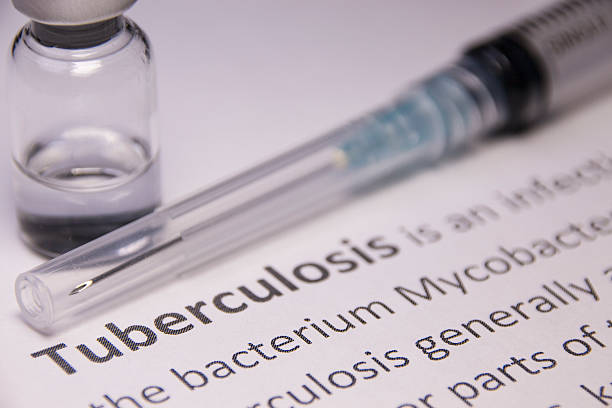Tuberculosis: Treatment duration could be reduced to two months
- June 21, 2023
- Africa / Tuberculosis
- By The Bureau
- Read in French

A new therapeutic regimen can considerably reduce the duration of treatment, which currently varies between four and six months, depending on the severity of the disease for approximately two months. What a good news for the Tb community!
Tuberculosis (TB) treatment, which currently lasts between 4 and 6 months, could soon be reduced to two months. The findings of this clinical trial were presented on 20 February 2023 in Seattle (USA) at the 30th Conference on Retroviruses and Opportunistic Infections (CROI).
This clinical trial, named SimpliciTB and implemented by the Global Alliance against Tuberculosis, involved the evaluation of a therapeutic combination called BPaMZ, comprising four different drugs namely bedaquiline (B), pretomanid (Pa), moxifloxacin (M) and pyrazinamide (Z).
SimplicitTB was conducted on 455 patients with drug-sensitive (DS) or drug-resistant (DR) tuberculosis, spread across 26 centres in eight countries: Brazil, Georgia, Malaysia, Philippines, Russia, South Africa, Tanzania and Uganda.
However, she indicated the importance of these clinical trials in a press release published on the University of St-Andrews website, stating that “Recent progress in TB therapeutics has been limited, with few new drug classes emerging in the last 50 years.”
Consequently, she says, “Innovative clinical trials like SimpliciTB help us better understand how novel drug regimens work against both DS-TB and DR-TB, lighting the way to better treatment options for all TB patients.”
Endpoint
According to the press release published on 20 February 2023, the results of the trial showed that the BPaMZ regimen was highly potent against the TB bacteria, meeting its primary endpoint with DS-TB participants.
However, the BPaMZ regimen was unable to meet the secondary endpoint of non-inferiority in percentage of favourable outcomes compared to the current six-month HRZE treatment regimen in DS-TB.
This was due to adherence challenges, with around ten percent of patients on the BPaMZ regimen discontinuing treatment because of side effects.
Significant progress has been made in recent years, with the duration of treatment for DR-TB being reduced from more than 18 months to 6 months, and for DS-TB from 6 to 4 months. Yet, according to experts, these treatments are still lengthy…
Anti-tuberculosis organisations such as the TB Alliance are therefore enthusiastic about the possibility of a further reduction in the length of treatment. Maria Beumont, the organisation’s Vice President and Chief Medical Officer, outlines some of the reasons why shorter treatment courses are needed.
She says “More robust regimens that allow shorter treatment duration increase the speed at which patients become non-infectious, thereby reducing the spread of the disease. Moreover, a shorter treatment course improves the quality of life of people with tuberculosis and facilitates adherence.”
Cost
Suvanand Sahu, Deputy Executive Director of Stop TB Partnership, another anti-tuberculosis organisation concurs by saying “Treatment for tuberculosis currently lasts 4 to 6 months. This requires long-term follow up for people undergoing treatment and long commitment by the healthcare system in providing treatment. The longer the course of treatment, the greater the risk of discontinuing and the consequences this entails.”
For Maria Beumont, another reason is the cost of treatment itself: “The cost of curing DR-TB is huge, posing a significant challenge to governments, healthcare systems and those affected by the disease.”
Quoted in the release, Derek Sloan from the University of St Andrews Medical School said “The SimpliciTB trial suggests that new antibiotics combinations can kill all types of TB bacteria faster than traditional approaches. However, as we find new options to improve TB treatment, we still need to work out which therapies are most suitable for each individual patient. ”
Work will include more detailed investigation of which anti-TB antibiotics work best together. Future considerations will include patient safety and ways to implement new treatment strategies across the diverse range of settings where TB is a major threat to health.
Still, experts regret that insufficient funding is slowing progress in the development of new, more effective TB drugs and vaccines.
Increased funding
According to Suvanand Sahu, the funds presently available for TB care and prevention represent only a quarter of what is needed, while the funds available for research and development represent a fifth of what is needed.
“We firmly believe that a further reduction in TB treatment duration is possible, and we must ensure that research efforts in this direction are funded and accelerated”, urges the Deputy Executive Director of Stop TB Partnership, a hosted entity of the United Nations.
Maria Beumont is more explicit and even puts forward figures, stating that “An increase in funding for TB research to US$5 billion per year would help to achieve concrete results towards our goal of putting an end to TB.”
This call for funding is particularly relevant to Sub-Saharan Africa countries, where national resources to fight TB are described by experts as “very low”. “This makes countries dependent on Global Fund grants, which are not sufficient, resulting in these countries having huge funding deficits in their TB budgets. The Global Fund and the development banks need to increase their funding”, concluded Suvanand Sahu.
According to the WHO Global Tuberculosis Report 2022, 10.6 million people fell ill with tuberculosis in 2021, causing 1.6 million deaths, with eight countries (Bangladesh, China, Democratic Republic of Congo, India, Indonesia, Nigeria, Pakistan, and the Philippines) accounting for more than two-thirds of these figures.
Julien Chongwang


